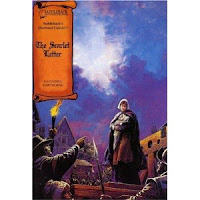Jenna struggles to put her life in order by watching home videos that her parents had compiled. When she starts to remember things, they don't add up. Why is she a walking history book all of a sudden? How can she remember being baptised in her infancy? Why does she hear the voices of her best friends, Locke and Kara, in her head?
Something is different about her, but she can't put her finger on it. Why can't she remember? What is her middle name? Why does her grandmother treat her like an outcast? All will be revealed in The Adoration of Jenna Fox.
This book is incredible. I could hardly manage to put it down, but, at the same time, it's a heavy book to carry. It has a lot of deep thinking to it. It questions modern medical theories and asks where the line is to be drawn.
The characters are fantastic, but at the same time a little thin. Jenna and Lily are the two characters that will stand out. Jenna is the focus of the book, so you spend a lot of time in her head. Lily, on the other hand, becomes a brilliant character because she questions things just as you do. She honestly doesn't know what to think about her granddaughter.
My rating is:
For more of my thoughts, check out my Reading Log


















